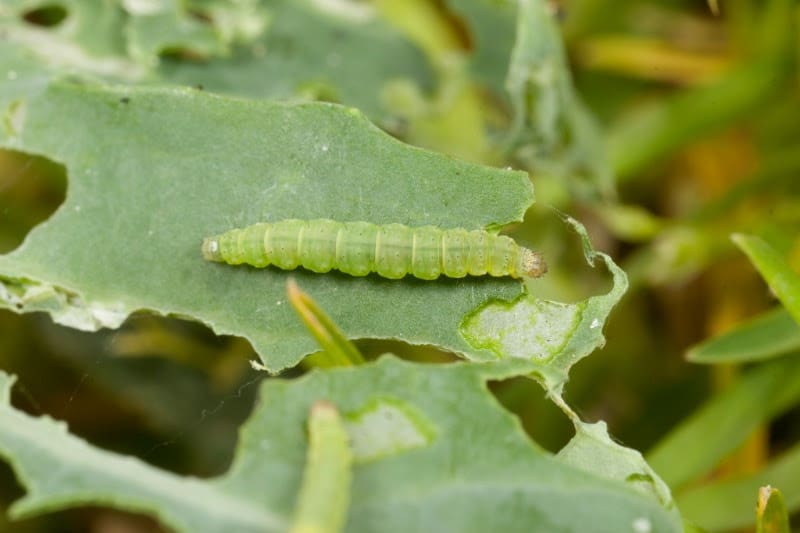DIAMONDBACK moth (DBM) caterpillar populations are increasing in Western Australian canola crops this spring and growers are advised to start regularly checking crops for the potentially damaging pest.
DBM (Plutella xylostella) caterpillars, or larvae, grow to 12 millimetres long, are pale yellowish-green and tapered at both ends, and can cause severe yield losses in canola, through feeding, when in high numbers.
Synergy Consulting’s Chris Wilkins said all growers should start sweep netting their canola crops twice a week to gauge numbers of DBM caterpillars.
“Sweep net your crops early, sweep often and be aware that you can often obtain economically viable results even from spraying crops that have lower yield potential,” Mr Wilkins said.
“It is important to sweep net canola crops regularly because, as they go through their life cycle, DBM numbers picked up from sweeping can go through ‘waves’ and can vary depending on what stage the population is at in its life cycle.”
Mr Wilkins, who is also a Grains Research and Development Corporation (GRDC) Western Region Panel member, said the DBM control threshold for the mid to late-flowering stage of canola that was not moisture stressed was more than 100 caterpillars per 10 sweeps.
“A lower threshold may be used during extended dry periods and information on thresholds is available in the GRDC Diamondback Moth Fact Sheet at www.grdc.com.au/GRDC-FS-DBM or on the Department of Primary Industries and Regional Development (DPIRD) website at http://bit.ly/2x5sRu5,” he said.
Agronomist and GRDC Western Region panellist, Michael Lamond, encouraged growers to be vigilant and aware of the potential for DBM to damage crops.
“This season, canola crops are finishing later in the season than they have in recent years, which means the plants are maturing during a warmer period in spring,” he said.
“Warmer conditions allow DBM populations to go through their life cycles more quickly and exponential increases in numbers can happen very quickly.
“This year is shaping up to be more of a problem year for DBM than in the recent past, and in most canola crops there are currently low levels of the pest which have the potential to increase rapidly.”
Mr Lamond encouraged canola growers to contact their adviser or retail agronomist for guidance on DBM management this season.
“Last year, many canola crops in low rainfall regions were either not sprayed or sprayed too late, resulting in significant grain yield loss,” he said.
In addition to the GRDC Diamondback Moth Fact Sheet and information on the DPIRD website, information about DBM is also available in the GRDC Resistance management strategy for diamondback moth in Australian canola available at https://grdc.com.au/fs-resistancestrategydiamondbackmoth and the South Australian Research and Development Institute (SARDI) PestFacts article Keep an eye on diamondback moth available at http://bit.ly/2NI7icv.
Mr Lamond said other canola pests this season included turnip aphids (Lipaphis pseudobrassicae) which he said were building up in numbers in WA’s southern cropping areas.
Source: GRDC
Grain Central: Get our free daily cropping news straight to your inbox – Click here


HAVE YOUR SAY